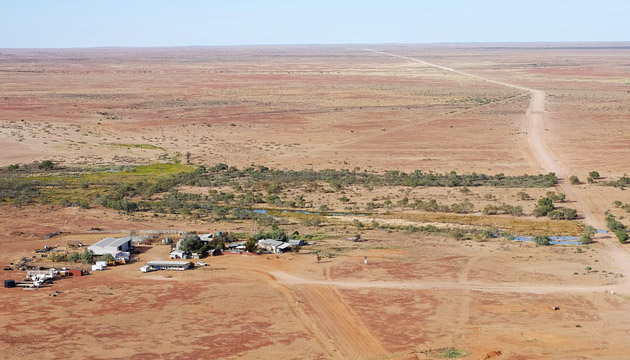Early succession planning and the production of organic beef underpin the future of a new generation of the Bell family on the Birdsville Track’s Dulkaninna Station.
Story By Therese Hall
On the dusty plains of the Birdsville Track, a rush of water flowing across the road is an anomaly. Travelling north from the cameleer settlement of Marree, there are scant signs of life. The only indication of some of the vast cattle stations strung along the track are cattle grids and occasional ribbons of gravel heading off into a patchwork of parched sand and glistening gibber flats.
But on Dulkaninna Station, 83 kilometres north of Marree, water wells up from the Great Artesian Basin (GAB), creating a trackside lagoon right in front of the homestead. Known to locals as the Dulkaninna Wetlands, it softens the living conditions for three generations of the Bell family, and makes the homestead easy to locate for visitors. It also brings a flush of birdlife and the shade of coolabahs in an otherwise treeless setting. In a region dependant on the GAB for sustenance, flows from most of the bores are now strictly regulated and shared between pastoralists and miners. But Dulkaninna’s homestead bore is piped into a verdant lagoon, like the homestead bores on Clayton Station to the south, and Mungerannie Roadhouse and several others to the north.
The Bells are one of a handful of families that can trace their heritage back to the first white settlement on the Birdsville Track in the 1890s, following the government sinking of a string of bores a day’s ride apart for stock transport. The Scobie, Crombie and Morton families are among those that carved out a remarkable heritage on marginal country astride the 518km fabled strip of sand and gravel. Some have left after three or four generations of hard slog, some have bowed out after devastating personal losses, while others persist despite the inescapable cycle of drought.
The Bells are one family that’s determined to stay. Although running one of the smallest stations on the track – at 2000 square kilometres it’s about half the size of its northern neighbours – Daryl and Sharon Bell, their son David and his wife Jess are making strategic decisions to generate a reliable income from their land, their stock and their effort. Specialising in organic pasture-fed Hereford Angus cross cattle, they are forging their future with vigour.
This Story is from Issue #95
Outback Magazine: June/July 2014










